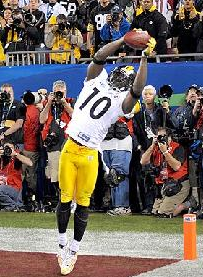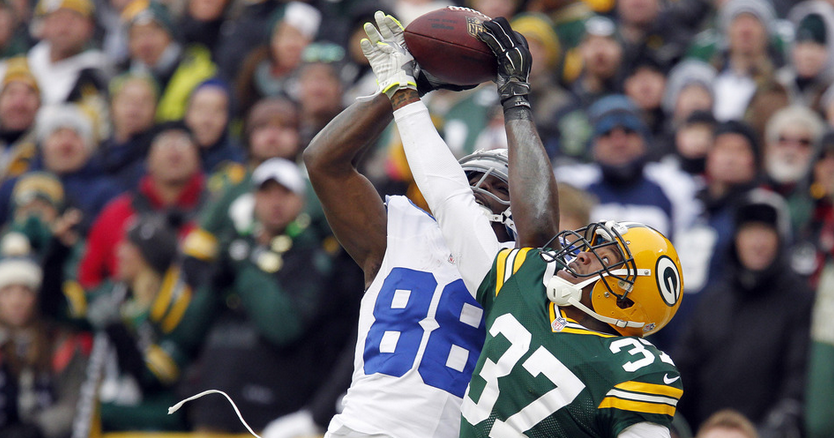Now it’s the Process Rule that has NFL fans in Mob Mode. Not so long ago it was the Tuck Rule, which was burned at the stake — before a cheering crowd — in 2013.
I won’t attempt to explain the Process Rule, or the league’s rationale for it, because, well, who can understand it? It’s what you’d get if Jibberish had a one-night stand with Claptrap. (I considered Mumbo Jumbo as the second partner, but I thought it would be funnier if “clap” were part of the equation.)
Naturally, the NFL says it correctly enforced this misbegotten rule on the pass to Dez Bryant late in the Packers-Cowboys game. I say: Whatever floats your boat, Roger. I also say — in a futile attempt to calm the masses — there have been far, far worse rules in pro football than the Process Rule (or even the Tuck Rule, which Mike Shanahan called “the worst rule in the history of the game”).
The NFL, after all, has had some real doozies over the decades, especially in the early years. Here, for your entertainment, are 5 Rules That Were Even More Ridiculous Than The Process Rule (for my money, at least):
● If a pass into the end zone — on any down — falls incomplete, it’s a touchback.
In the ’20s, before pro football’s founding fathers opened up the game, there were a number of rules that discriminated against passing. This was probably the most egregious. Imagine if Santonio Holmes had dropped that second-and-6 throw in the back-right corner in the last minute of Super Bowl 43. Under the old rule, the Steelers would have lost possession and the Cardinals would have walked away with the Lombardi Trophy.
● The ball carrier can get up after being after being knocked to the ground and try to gain additional yardage as long as his forward progress hasn’t been stopped.
The he-man NFL was trying to distinguish itself from the colleges with this rule, and occasionally a ball carrier would pick himself up and scramble for more yards. But the rule also fostered late hitting, piling on and other forms of carnage. The league finally got rid of it after the Bears brutalized Hugh McElhenny, the 49ers’ Hall of Fame running back, in 1954 and caused him to miss the second half of the season.
● The defense can hit the quarterback until the play is over, even if he’s gotten rid of the ball.
It wasn’t until 1938 that there was a roughing-the-passer penalty. Sammy Baugh: “Coaches told their players, ‘When the passer throws the ball, you put his ass on the ground.’ If you have to
chase him for 20 yards, put him on the ground.’ Hell, they’d chase me back 25 yards or so. I’d complete a short pass, and the receiver would be running all the way downfield, 75 yards away from me, and I’d still be fighting [defenders] off. It looked so damn silly.”
● If the ball carrier runs out of bounds — or is deposited there by the defense — the ball will be spotted one yard from the sideline.
Before hashmarks were added in 1933, the ball was spotted where the previous play ended. Needless to say, this could put the offense in a real bind. It usually had to waste a down to move the ball back to the middle of the field so it would have more room to operate.
● A player who leaves the game can’t come back in until the next quarter.
Welcome to single-platoon football. During the war years, though, when manpower was scarce, the NFL began to experiment with unlimited substitution. The league permanently adopted it in 1949, paving the way for the highly specialized game we enjoy today.
● Dishonorable mention: A team taking an intentional safety retains possession of the ball.
Talk about a lousy rule. In 1925 the Giants were leading the Providence Steam Roller 13-10 with time running out when they decided to hand Providence two points rather than punt from their end zone. Who can blame them? According to the rule in those days, they didn’t have to free kick from the 20-yard line and sweat out the final seconds. Instead, they were given a new set of downs at their 30. They proceeded to run three more plays, kill the clock and lock up a 13-12 win.
I could go on, but you get the idea. As Jim Mora (the Elder) would put it: Process Rule? You kiddin’ me? Process Rule? There have been much more terrible rules than that.



